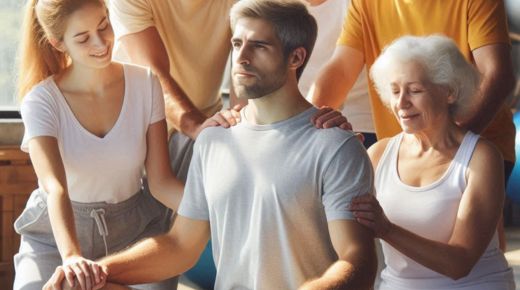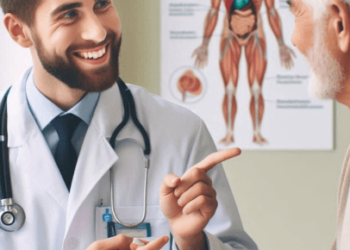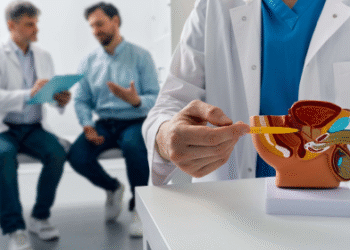
Recovering from a stroke can be a challenging journey, particularly when it comes to regaining mobility. Stroke survivors often face physical limitations due to muscle weakness, coordination issues, and balance problems. However, with the right strategies and a dedicated stroke recovery plan, individuals can significantly improve their mobility after a stroke. This article will outline effective techniques and considerations to enhance mobility during the rehabilitation process.
Understanding Mobility Challenges Post-Stroke
After a stroke, many individuals experience difficulties with movement, which can affect their ability to perform daily activities. Common mobility challenges include:
- Weakness on One Side of the Body: Hemiparesis, or weakness on one side, is common among stroke survivors. This can impact walking, balance, and coordination.
- Coordination Issues: Fine motor skills may be affected, making tasks such as buttoning a shirt or holding a cup difficult.
- Balance Problems: Individuals may feel unsteady or have a heightened risk of falling due to balance impairments.
- Fatigue: Stroke survivors often experience fatigue, which can further hinder their ability to engage in rehabilitation exercises.
Recognizing these challenges is the first step in developing a comprehensive approach to improving mobility.
Creating a Stroke Recovery Plan
An effective stroke recovery plan should be individualized, focusing on the unique needs and goals of each patient. Collaborating with healthcare professionals, including physiotherapists, occupational therapists, and medical doctors, is essential for creating a holistic recovery strategy. Here are key components to consider when developing a recovery plan:
1. Set Realistic Goals
Setting achievable and realistic goals is crucial for motivation and progress. Patients should work with their therapists to establish short-term and long-term goals based on their current abilities and desired outcomes. For instance, short-term goals may include walking a certain distance with assistance, while long-term goals could involve walking independently or returning to a favorite activity.
2. Engage in Stroke Physiotherapy
Physiotherapy is a vital component of any stroke recovery plan. A physiotherapist can assess the individual’s physical capabilities and create a tailored exercise program focused on improving strength, flexibility, and mobility. Common physiotherapy techniques include:
- Strengthening Exercises: Targeted exercises to rebuild strength in affected muscles can enhance overall mobility. Resistance training, using weights or resistance bands, can be integrated into the rehabilitation program.
- Balance Training: Specific exercises aimed at improving balance and coordination are essential. These may involve standing on one leg, using balance boards, or engaging in dynamic activities like walking on uneven surfaces.
- Gait Training: Therapists can help patients practice walking using various assistive devices such as walkers or canes, gradually reducing support as strength and confidence improve.
3. Practice Daily Mobility Activities
Incorporating mobility exercises into daily routines can reinforce gains made in physiotherapy sessions. Here are a few simple activities that can help improve mobility:
- Walking: Start with short distances and gradually increase the length as endurance builds. Walking aids, such as walkers or crutches, can provide additional support.
- Standing Up and Sitting Down: Practice transferring from sitting to standing and vice versa. This movement is fundamental to many daily activities and is essential for improving independence.
- Stair Climbing: If appropriate, practicing climbing stairs can help improve leg strength and balance. Start with one or two steps, gradually increasing as strength improves.
4. Utilize Assistive Devices
Assistive devices can play a significant role in improving mobility after a stroke. These tools can help individuals maintain independence while providing the necessary support. Common assistive devices include:
- Canes and Walkers: These provide stability and support while walking.
- Braces and Splints: Orthotic devices can assist with limb positioning and stability, especially for the affected side.
- Mobility Scooters or Wheelchairs: For those with more severe mobility limitations, scooters or wheelchairs can facilitate movement in the community.
5. Stay Active and Engaged
Maintaining a physically active lifestyle is essential for improving mobility. Encouraging participation in enjoyable activities can foster motivation and enhance physical fitness. Here are a few ways to stay engaged:
- Group Exercises: Joining group classes or rehabilitation programs can provide social support and motivation.
- Recreational Activities: Engaging in hobbies or activities that involve movement, such as gardening, dancing, or swimming, can promote physical activity and overall well-being.
- Mind-Body Practices: Activities such as yoga or tai chi can improve balance, flexibility, and coordination while providing relaxation benefits.
Improving mobility after a stroke is a multifaceted process that requires dedication, support, and a structured recovery plan. By setting realistic goals, engaging in stroke physiotherapy, practicing daily mobility activities, utilizing assistive devices, and staying active, stroke survivors can significantly enhance their mobility and quality of life.
The journey to recovery may have its challenges, but with persistence and the right support system, individuals can achieve remarkable progress and regain their independence. It’s essential to remember that every small step forward is a victory in the path toward recovery.
It is very important to do the necessary tests during pregnancy to avoid as many future problems as possible. Your obstetrician-gynecologist will advise you on what is needed according to your needs.













